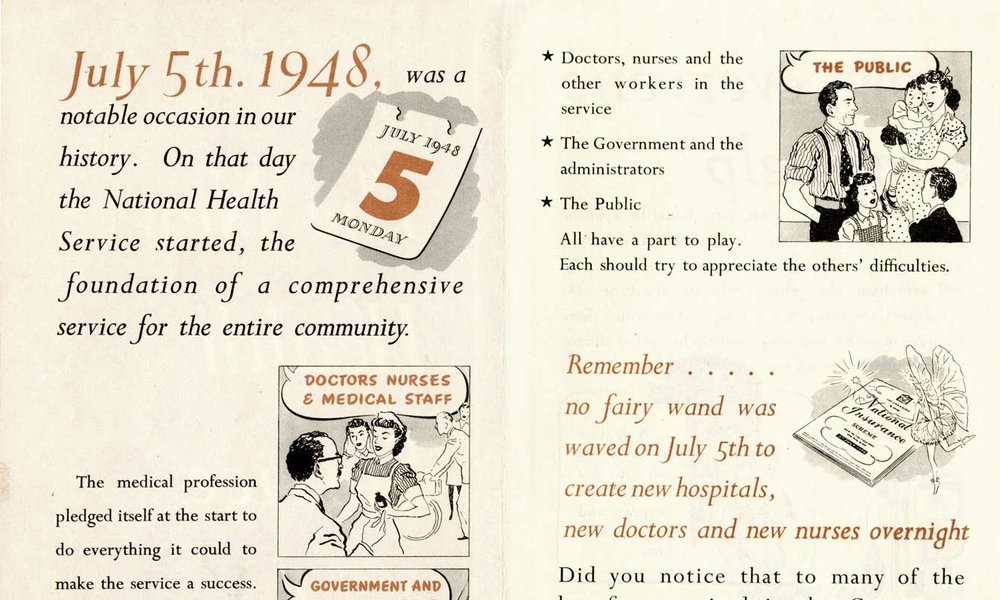Health in the 1920s
The 1920s saw the state and local authorities taking measures to improve the population’s health. Our records provide information on health care provision during a period of change in a society that had just witnessed a global war and a devastating influenza pandemic.
Leicestershire Insurance Committee Healthgram
Date: Around 1929
Catalogue reference: View the record N/A in the catalogue
Driven by moral and welfare concerns, the government and local authorities set out to improve the health of citizens. In the 1920s, health campaigns were carried out by local authorities – the quality of which depended on the enthusiasm of local health organisations and medical officers.
Leicester Health Insurance Commission gave advice in the form of flyers with basic health and lifestyle tips during National Health Week. This 'healthgram' warns the reader 'If you are in the habit of sleeping with the window closed, you are treating your lungs very shabbily, giving them only dirty air with which to cleanse the blood'.
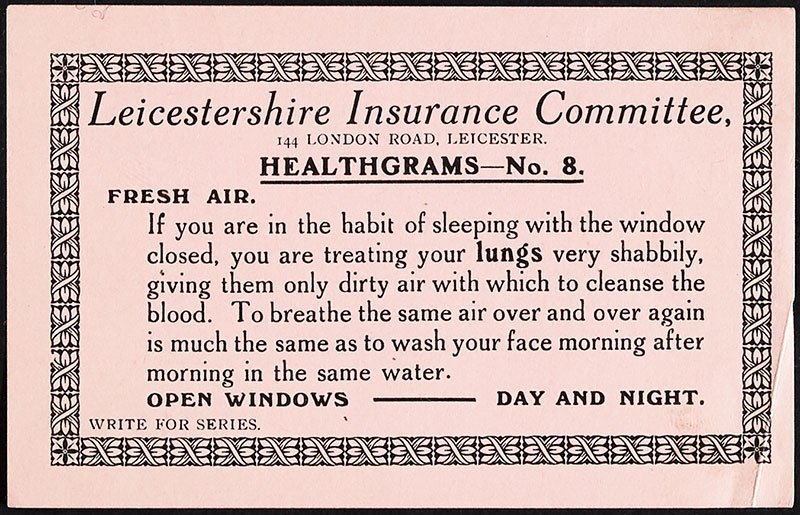
Influenza health circular
Date: 1920
Catalogue reference: View the record N/A in the catalogue
This information was relayed to local authorities following the devastating influenza pandemic that had taken the lives of an estimated 250,000 people in Britain from 1918 to 1919.
Medical science had little to offer and there was no consensus on how best to treat the flu. Some medical practitioners at the time incorrectly believed that influenza was caused by bacteria, prompting widespread use of disinfectants and ‘gargling the throat and washing out the nostrils’.
Other precautionary measures advised the avoidance of ‘chill’, ‘unnecessary travelling’, and ‘crowded meetings and hot rooms’.
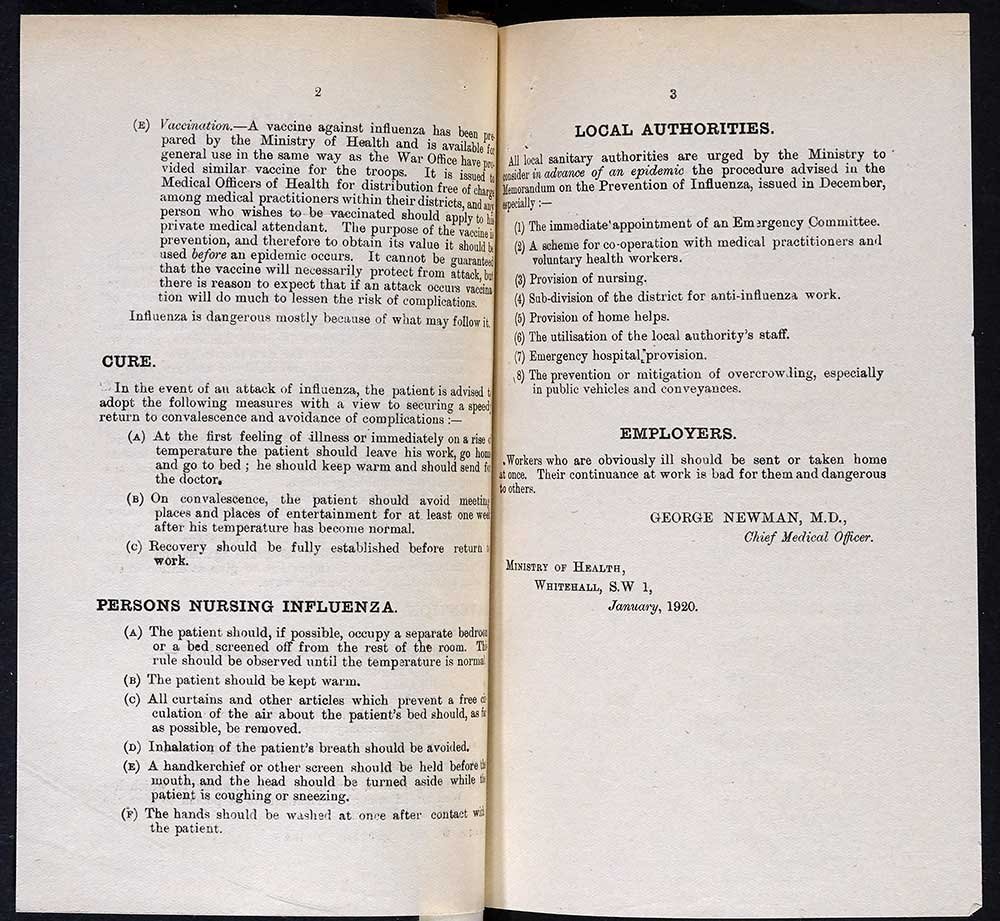
Plan of Ministry of Health section at the British Empire Exhibition
Date: 1924
Catalogue reference: View the record N/A in the catalogue
The British Empire Exhibition, held at Wembley Park from 1924 to 1925, included huge pavilions of displays that explored domestic and overseas themes relating to culture, trade, leisure, and industry. One of the main exhibits focusing on the domestic front was that of health.
Statistics used in the exhibition show that the death rate had declined throughout the 19th century, from a rate of 24 per 1000 to 12 per 1000 over the previous 70 years. Apart from a rise due to the influenza pandemic, the death rate continued to decline during the 1920s.
This decline was due to a growth in preventive medicine, an increase in prosperity and the rise in real wages. Public health measures such as the Public Health Act of 1875, had helped to improve sanitation and prevent the spread of disease in many urban environments across the nation.
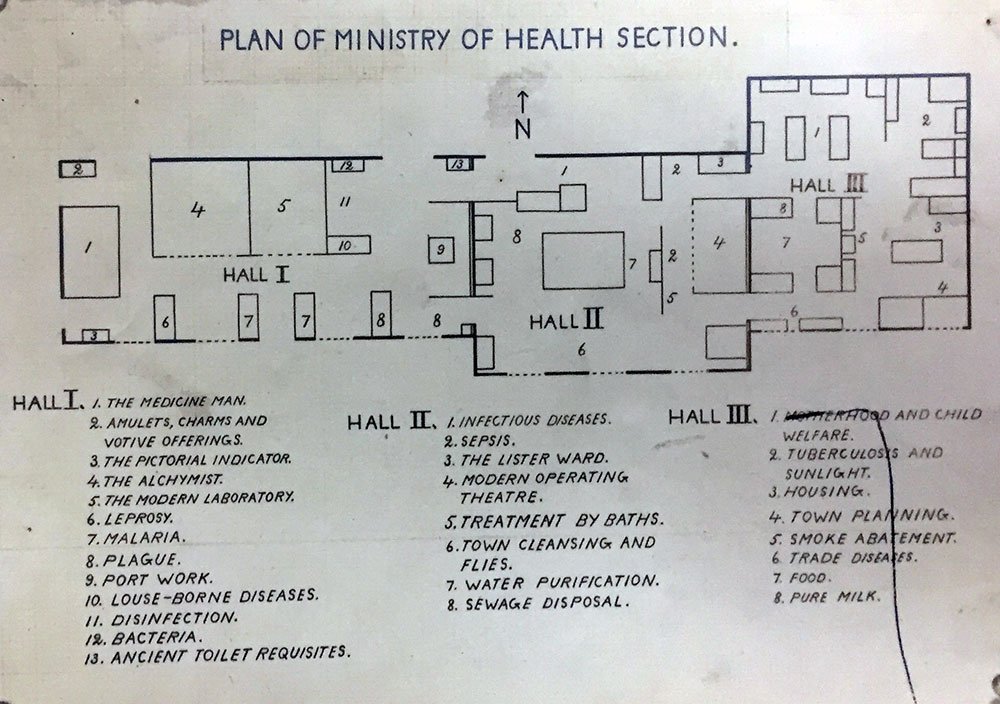
Booklet issued by Stols Electrophone Company advertising a hearing device
Date: 1924–1926
Catalogue reference: View the record N/A in the catalogue
Following the First World War many ex-service personnel had to come to terms with injuries and disabilities including hearing damage caused by trench warfare or shell shock.
The first hearing aid had been invented over a decade before, but there was an increase in companies offering products to help with hearing during and following the war. Stols Electrophone Company recommended its products to counter ‘gun-deafness’ and was to be used at the 'opera house, theatre or church'.
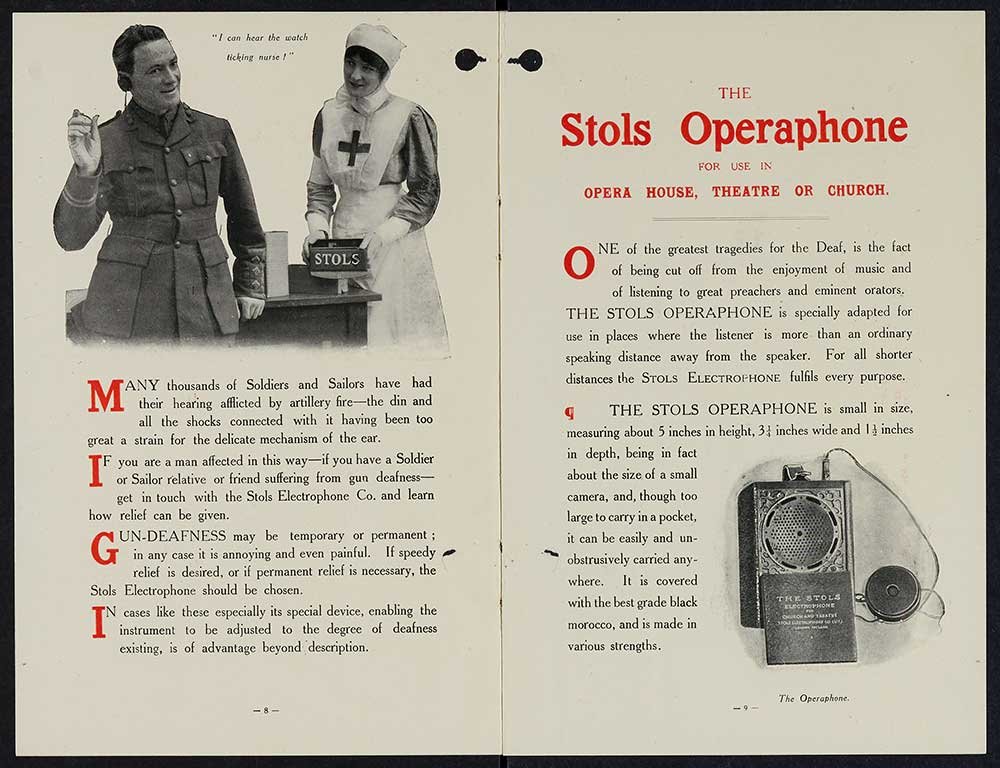
Drink more milk campaign
Date: 1927
Catalogue reference: View the record N/A in the catalogue
The National Milk Publicity Council used the findings of a study into the benefits of milk undertaken by the Medical Research Council in 1926 for this promotional postcard.
Conducted on boys living in Dr Barnardo's Orphanage, the study claimed that the addition of milk to the diet of school boys increased their average height and weight. However, the Medical Research Council called this postcard 'an undesirable form of propaganda' that misrepresented the findings.
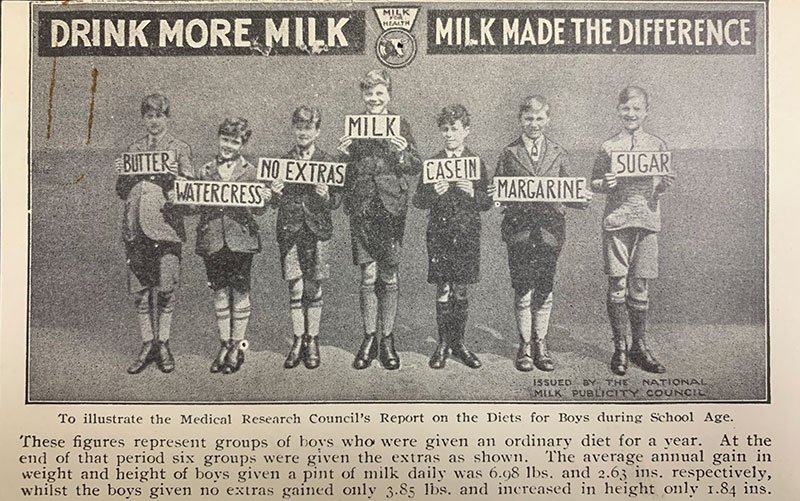
Leicester Health Insurance Committee Better Health magazine
Date: February 1929
Catalogue reference: View the record N/A in the catalogue
Many health campaigns centred on the nourishment and development of mothers and children. Society was concerned with producing a strong healthy nation due to fears that the population was physically deteriorating.
Better Health magazine was produced as part of an ongoing localised health campaign by Leicestershire Insurance Commission. It gives us an insight into health concerns of the day, such as nutrition, poverty, hygiene, pollution and exercise.
There was also concern over the spread of infectious diseases like smallpox, measles, typhoid, diphtheria, and tuberculosis. In a pre-antibiotic era, prevention was paramount.
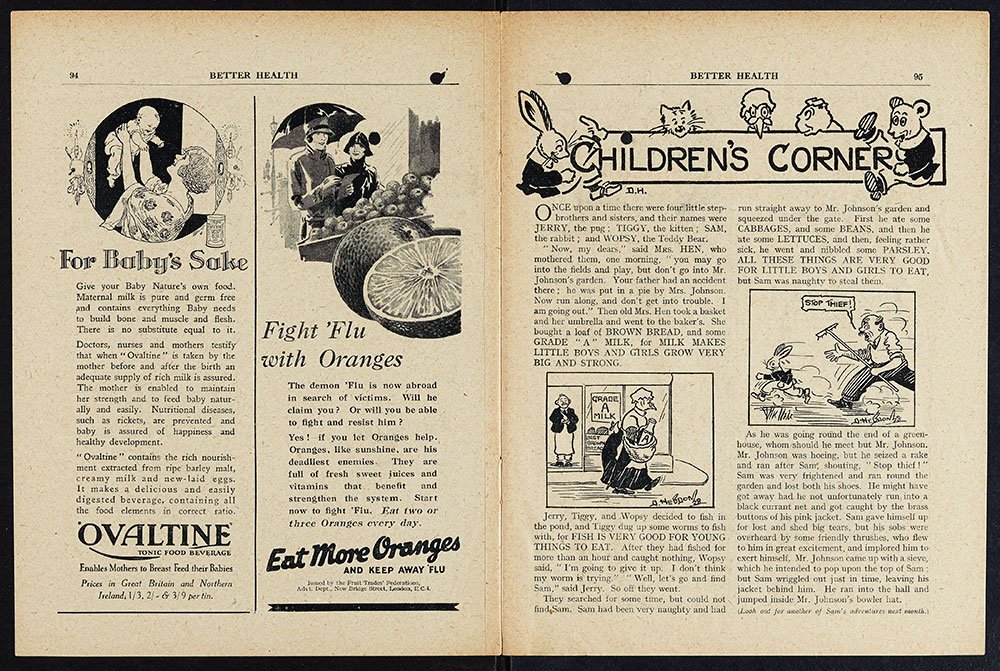
Venereal disease leaflet
Date: 1922–1923
Catalogue reference: View the record N/A in the catalogue
During the First World War, Army Medical Services provided free treatment for venereal diseases to men at military hospitals. Many local authorities continued to provide disinfectants and sheaths at clinics in the 1920s.
As this government leaflet shows, there was a general fear that sexual promiscuity was rising, particularly following demobilisation as soldiers were 'being exposed more than usual to temptations'. Attitudes to sexual health services were fraught, as the state did not want to be seen encouraging sexual activity.
This leaflet cautions 'against treating yourself, or going to quacks, herbalists etc. , for treatment' and sternly advises 'On no account should you marry until you are cured'.
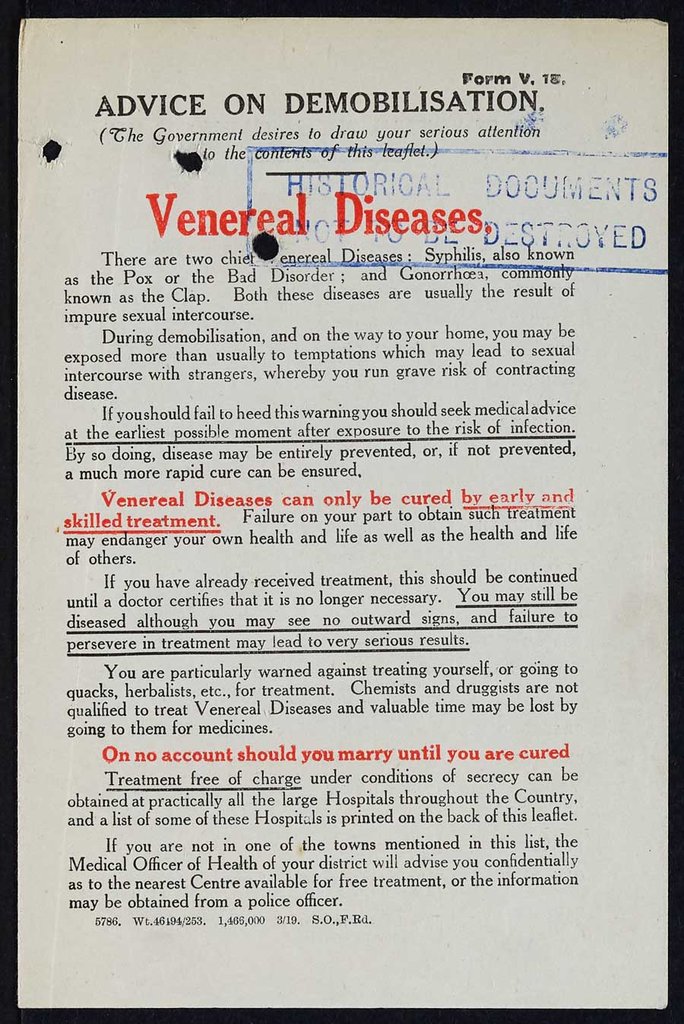
Poster for film based on Marie Stopes' book Married Love
Date: 1923
Catalogue reference: View the record N/A in the catalogue
Cinema was a popular leisure activity in the 20s, used to educate and entertain.
The 1923 silent film Married Love was based on Marie Stopes’ popular book of the same name, which promoted sex education and family planning in marriage. An enduring religious and moralistic culture meant birth control was taboo in 1920s society.
Initially, the Board of Film Censors declined to give the film a certificate, believing it to be propaganda for birth control. The publishers were required to rename the film Maisie's Marriage. This eye-catching poster plays on this to entice its audience: 'What's in a name? The Original Title of our Film cannot be used by order of the Home Office so ????? (can you guess?) will be shown as Maisie's Marriage'.

